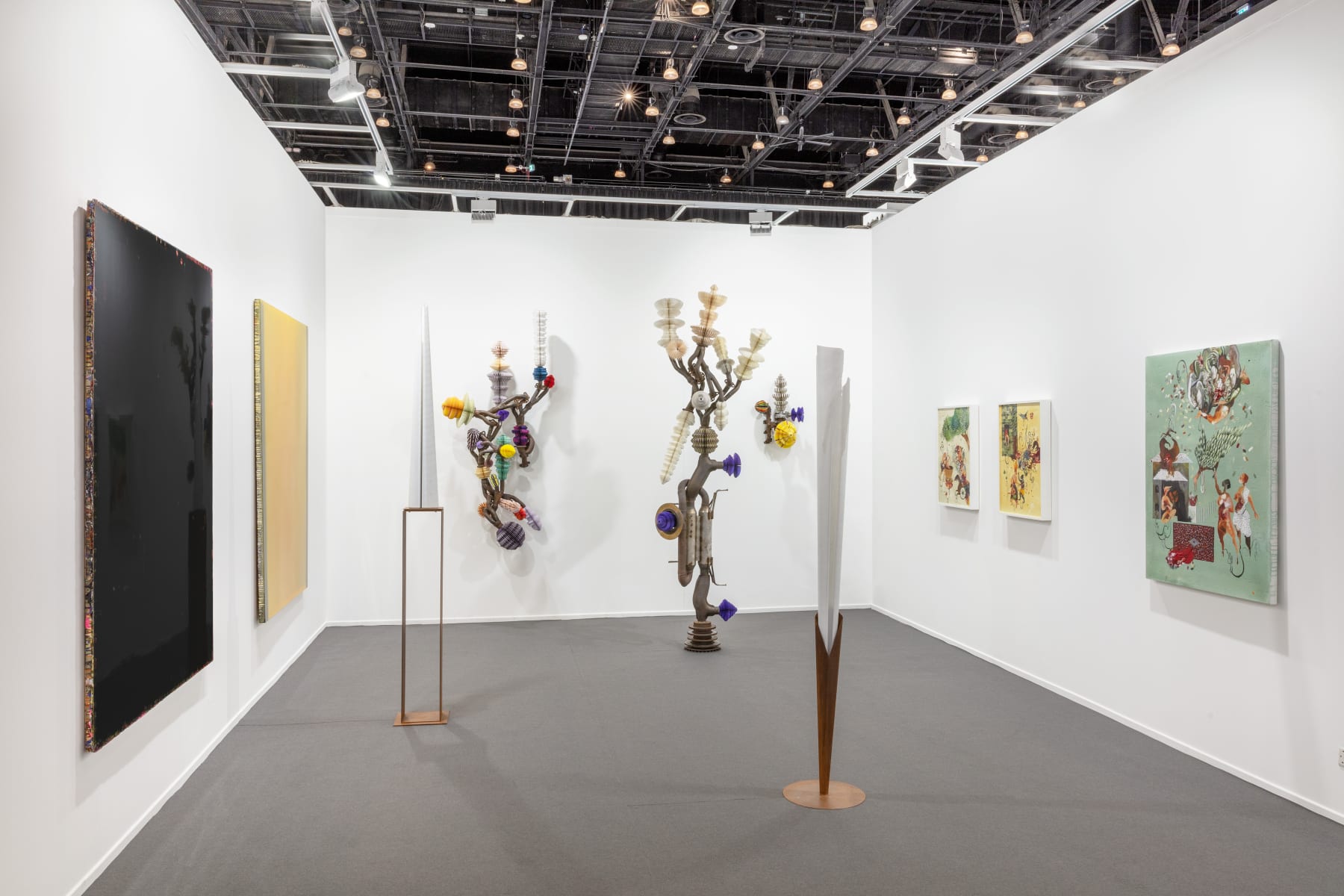On the occasion of Art Dubai 2022, Gallery Rosenfeld's presentation features sculptural works by Japanese artist Keita Miyazaki (*1983) and Austrian artist Herbert Golser (*1960), and paintings by French artist Emmanuel Barcilon (*1967) and Iranian painter Shiva Ahmadi (*1975).
For Japanese artist Keita Miyazaki, destruction became a pivotal theme, as he witnessed first-hand the devastating effects of the tsunami which hit Japan in 2011. Faced with the loss of so much we hold dear in our industrialised societies, the artist wanted to find a way to reinvent so much that appeared now to be obsolete. Drawing on his technical ability with metal, he finds various car engine parts which he proceeds to weld together, thereby creating a completely new form. To this he adds richly coloured folded paper or felt shapes inspired by origami, as an important reference to Japanese culture. This unique hybrid of soft and hard materials has created a totally new sculptural language, which resembles the exotic vegetation on an undiscovered planet.
The Austrian artist Herbert Golser’s abstract marble sculptures with their elegiac, elongated forms defy our understanding of the possibilities of the material. Marble is not generally known for its excessive fragility but Golser has addressed specifically this quality, exceeding even the delicacy of his works with wood, which similarly push the boundaries of the ‘possible’. The artist worked with wood for many years before undergoing a major commission for a marble work in a church in his native land. This led to his desire to continue expanding his sculptural language in a new medium. Now many years later, he has continually increased how far he can reduce the weight of the marble structures so that at their highest vertical point they are absolutely wafer thin.
The French artist Emmanuel Barcilon is concerned with using light to penetrate the depths of his paintings. Applying layers of pure pigment over a wooden support before sanding the surface down and beginning the process anew with a different colour, creates, over the many months which this practice requires, an extraordinary perception in the viewer of staring into the depths of a mysterious landscape. This is visually accentuated by the resin the artist applies once the work is complete. As we gaze into the painting we realise it is speaking to us about perception and memory.
Shiva Ahmadi’s artistic practice embraces drawing and painting, particularly a rare expertise in watercolour, across 2D and 3D media and moving images. Her work explores contemporary conundrums between the historically refined aesthetics and cultural conceits of the Middle East with the violence, corruption, and uncertainties wrought not only upon local societies but the whole world by malicious, global potentates. She works with vibrant figures transposed from Iranian and Indian book-painting, as well as pleasing patterns, to create sometimes sly and often manifest themes of brutishness and mindless self-regard within abstracted land and cityscapes.





